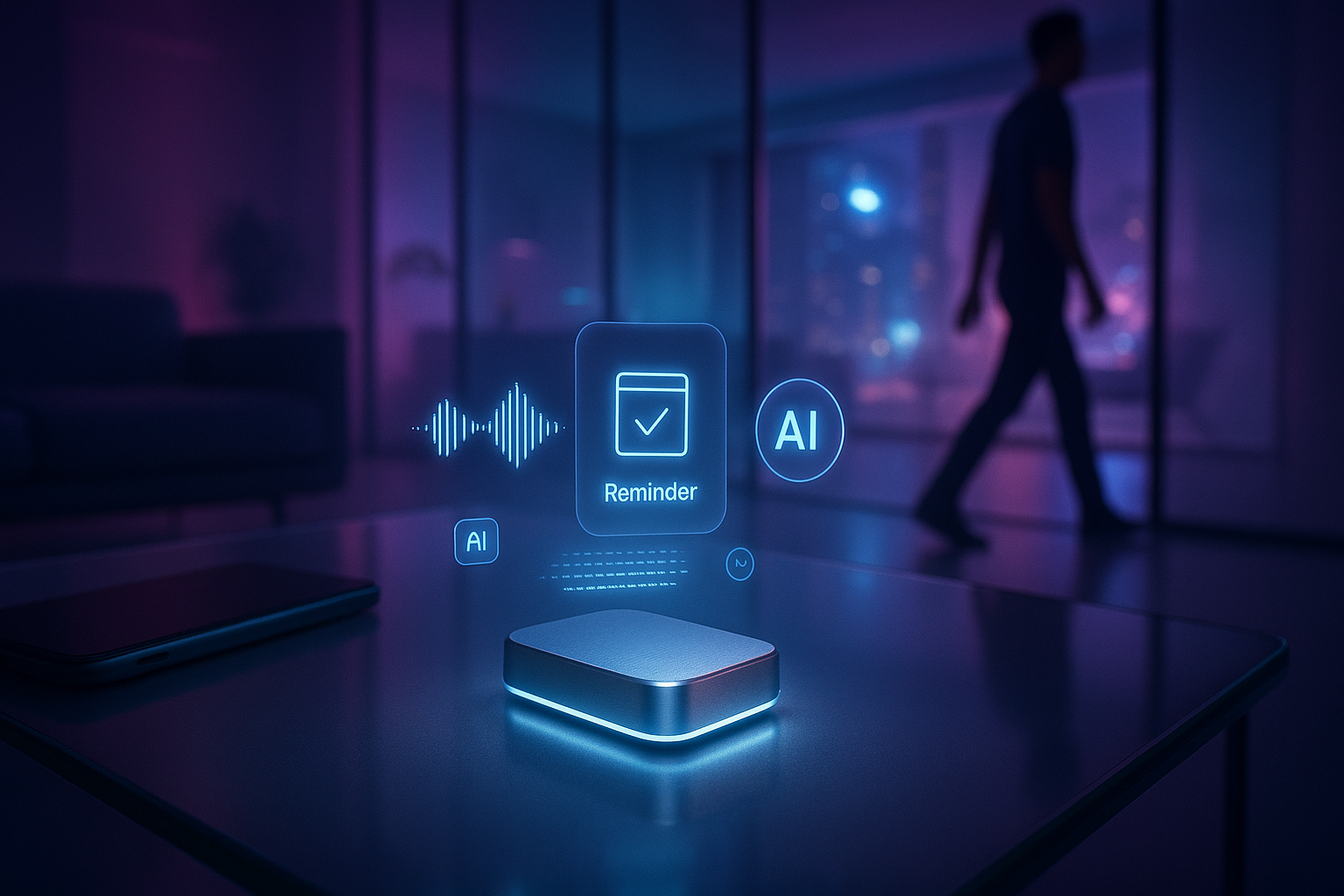
When OpenAI’s CEO Sam Altman speaks, the tech world listens. After all, he’s the man steering one of the most influential AI companies in the world. But in a recent series of statements and interviews, Altman has hinted at something bigger than just software models like GPT-5. He believes the hardware we use today—our smartphones and laptops—is not enough to unlock AI’s true potential.
That’s why Altman, together with legendary designer Jony Ive, is working on what could be the next revolution in personal technology: AI-native devices built for ambient, continuously aware companionship.
Why Smartphones Aren’t Enough for the AI Era
Smartphones have defined the last 15 years of human-computer interaction. They gave us apps, touchscreens, and the ability to access the internet from anywhere. But as Altman points out, these devices were designed for a pre-AI world. They’re optimized for apps, not for intelligent assistants that can anticipate needs, process context, and work in the background.
For AI to reach its full potential, it needs constant context—an awareness of where you are, what you’re doing, and what you might need next. Phones and laptops only provide snapshots when you engage with them. They aren’t “always present.”
That’s the gap Altman believes ambient AI hardware can fill.
The Vision of Ambient AI
The term ambient AI refers to technology that doesn’t just respond when you open an app or give a command. Instead, it quietly exists in the background of your life—listening, observing, and assisting in ways that feel natural.
Imagine a device that:
- Automatically reminds you of tasks while you’re heading out the door.
- Summarizes conversations you had earlier in the day.
- Picks up subtle cues from your environment to suggest useful actions.
- Acts more like a human assistant than a piece of software.
Altman’s vision is for AI to become woven into the fabric of daily living—a constant companion that requires little conscious effort to engage with.
Enter Jony Ive: The Design Genius
If anyone can turn this futuristic vision into an elegant, user-friendly product, it’s Jony Ive. Known for shaping the design language of Apple’s most iconic products—the iPhone, iPod, and MacBook—Ive has a track record of making technology feel human.
Ive’s design studio LoveFrom has partnered with OpenAI through a multibillion-dollar acquisition of io, an AI hardware startup. This move positions Ive as the creative architect of OpenAI’s hardware ambitions. Reports suggest their first device will be screenless, pocketable, and ambiently aware, a radical departure from the app-driven smartphones we’re used to.
The io Initiative: A Third Core Device
The Altman-Ive project, internally referred to as “io,” has been described as building the “third core device” in our digital lives.
- The first core device was the personal computer.
- The second was the smartphone.
- The third, according to Altman and Ive, will be an AI-native device designed not to replace but to complement existing tools.
Unlike smartphones, this new device may have no traditional screen or app ecosystem. Instead, it would serve as a portal to powerful cloud-based AI, always aware, always listening, and always ready to help.
Wearables, Tabletop Devices, and Beyond
So, what might this look like? Reports suggest that multiple form factors are on the table:
- Wearables: Wristbands, pendants, or earbuds that keep AI assistants close to the body.
- Tabletop Devices: Minimalist units for desks or home environments, offering constant AI presence without the need for a phone.
- Pocketable Companions: Small, screenless gadgets that use voice and gesture as the primary interfaces.
These devices wouldn’t compete with phones on apps or browsing—they would specialize in seamless, ambient assistance.
Why This Approach Is Different
Altman’s push isn’t just about slapping AI into another gadget. It’s about creating a new computing paradigm.
Key differences include:
- Ambient Awareness: Unlike apps that need to be opened, the device would be “always on,” continuously processing context.
- Screen-Free Design: Instead of trapping users in a glowing rectangle, the device could interact through natural voice, haptics, or projections.
- Cloud-Powered AI: The device itself wouldn’t carry all the processing—it would serve as a sleek bridge to powerful AI in the cloud.
- Privacy by Design: With Ive’s influence, the device could introduce more intuitive controls for when AI listens and when it doesn’t.
The Challenges Ahead
Of course, this vision isn’t without obstacles.
- Adoption Curve: Consumers are deeply attached to smartphones. Convincing them to adopt a new category will take time.
- Privacy Concerns: A device that is “always aware” raises fears about surveillance and data misuse.
- Ecosystem Integration: For the device to succeed, it must connect seamlessly with existing tools—phones, laptops, smart homes, cars.
- Competition: Apple, Google, and startups like Humane are all exploring similar ideas. OpenAI’s advantage lies in its models, but hardware success isn’t guaranteed.
Why This Matters for the Future
If successful, Altman and Ive’s project could change how we interact with technology in profound ways:
- Less Screen Addiction: By reducing reliance on phones, it could help solve the mental health crisis tied to screen overuse.
- True AI Companionship: Instead of being a tool we command, AI could evolve into a partner that proactively supports us.
- Redefining Workflows: From managing meetings to handling emails, ambient AI could automate tasks so seamlessly that human productivity skyrockets.
- Shaping AI Ethics: With Ive’s design philosophy, there’s a chance to build trustworthy, humane AI experiences—not just efficient ones.
When Will We See It?
According to reports, the first prototypes are already in development, with a potential launch window around 2026–2027. The io acquisition, valued at roughly $6.5 billion, shows how serious OpenAI is about this direction.
The ambition is not just one device but an entire ecosystem of AI-native hardware—a new category that could eventually rival smartphones in cultural and economic impact.
The Final Word
Sam Altman isn’t just betting on AI software. He’s betting that the devices we use today won’t be enough to contain the power of AI tomorrow. With Jony Ive leading design, OpenAI is taking a bold swing at creating the next great device of the century—one that is ambient, aware, and seamlessly integrated into our lives.
It’s a high-stakes gamble, but if it pays off, it could reshape technology as profoundly as the iPhone did in 2007.
The only question now is: are we ready for a world where AI doesn’t just live in our apps, but in the air around us?




Leave a Reply